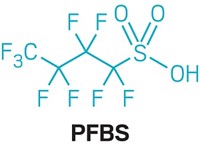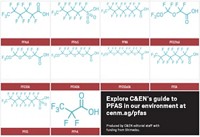Advertisement
Grab your lab coat. Let's get started
Welcome!
Welcome!
Create an account below to get 6 C&EN articles per month, receive newsletters and more - all free.
It seems this is your first time logging in online. Please enter the following information to continue.
As an ACS member you automatically get access to this site. All we need is few more details to create your reading experience.
Not you? Sign in with a different account.
Not you? Sign in with a different account.
ERROR 1
ERROR 1
ERROR 2
ERROR 2
ERROR 2
ERROR 2
ERROR 2
Password and Confirm password must match.
If you have an ACS member number, please enter it here so we can link this account to your membership. (optional)
ERROR 2
ACS values your privacy. By submitting your information, you are gaining access to C&EN and subscribing to our weekly newsletter. We use the information you provide to make your reading experience better, and we will never sell your data to third party members.
Environment
Water tainted with perfluorocarbons by U.S. military is focus of legislation
House of Representatives passes bill that would require study of health effects, impacts of potential drinking water regulation on development of substitutes
by Zack Colman, special to C&EN
July 18, 2017

The Pentagon would have to study whether drinking water tainted with perfluorinated chemicals used in firefighting causes health problems under a bill the U.S. House of Representatives passed on July 14.
The proposed 2018 National Defense Authorization Act (H.R. 2810) includes provisions on perfluorooctane sulfonate (PFOS) and perfluorooctanoic acid (PFOA), collectively known as perfluoroalkyl substances (PFASs). The chemicals persist in the environment indefinitely and have been linked to disease in people.
The military in the 1970s began using aqueous film-forming foam containing PFOA and other perfluorinated compounds that can degrade to PFOA or PFOS. Scientists have recently linked use of the foam at military installations to contamination of drinking water with PFASs. The Department of Defense is assessing its use of these substances and potential substitutes for them.
The bill would instruct the Pentagon to study the health of people who drank PFOS- or PFOA-contaminated water on or near current or former military installations. That study would include biomonitoring of community members and would have to be completed within five years.
The measure brings up the possibility that the Environmental Protection Agency might cap the amount of PFASs allowed in drinking water. EPA set a nonbinding health advisory level for PFASs in drinking water at 70 ppt in May 2016 but has not set a legally enforceable limit for these substances.
The bill would ask the Pentagon to consider whether setting an enforceable maximum would pose any significant challenges to the development of PFAS substitutes or the military’s cleanup of contamination.
The Senate is working on its own version of the legislation (S.1519), which is silent on PFASs.
CORRECTION: This story was updated on July 19, 2017, to reflect that the EPA advisory level is 70 parts per trillion.





Join the conversation
Contact the reporter
Submit a Letter to the Editor for publication
Engage with us on Twitter